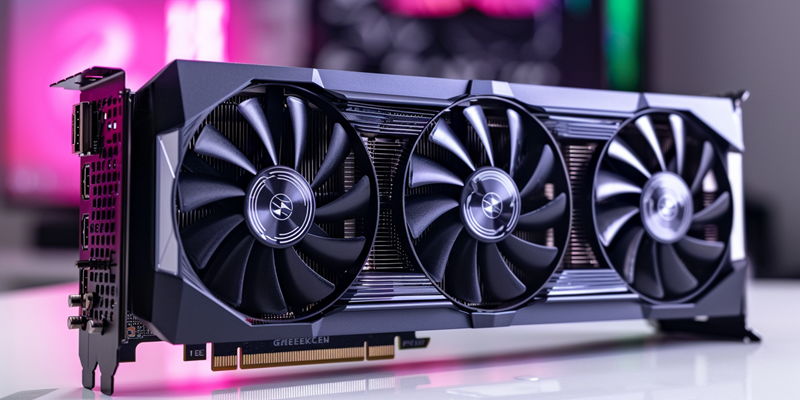The wallet impact is imminent for PC gaming aficionados as Nvidia is gearing up for a price hike across its GeForce GPU line. A 10% increase is on the horizon due to a perfect storm of elevated demand and supply chain snarls, hitting budget-conscious gamers the hardest. Particularly, models like the RTX 4060, RTX 3050, and the aged GTX 1650 will bear the brunt of this surge.
With no solid price fixed, the final cost will depend on the whims of independent card manufacturers such as MSI and ASUS. But what’s certain is that the dream of an affordable gaming setup is under threat. The current economic inflation and geopolitical tensions only add to the conundrum, creating the potential for even heftier price tags. As these elements converge, the future looks costly for those looking to keep their graphics performance up to par. Gamers will need to dig deeper into their pockets or set their sights a little lower on the graphics card ladder as the industry adjusts to the new financial landscape.
Demand and Supply Chain Woes
Surging Demand and Inflation Affecting GPU Prices
Amidst a resurgence in demand reminiscent of the previous year’s surge, the graphics card sector is grappling with significant pressures. Nvidia is at the heart of this tumult, having found a lucrative niche facilitating the burgeoning AI industry with specialized hardware solutions tailored to streamline AI processes. Their strategic shift toward AI-centric products is reshaping not only their own path forward but also the criteria for what makes graphic hardware sought-after in today’s market. This intense focus on AI capabilities has, in turn, left consumers in a vortex of elevated demand and pricing—a situation only exacerbated by broader economic forces such as inflation and global political dynamics. The confluence of Nvidia’s reorientation and external market pressures indicates a looming uptick in graphics card costs, posing challenges for all market participants.
Supply Chain Constraints Exacerbating the Issue
The supply chain grappling with adversity is like a tense chain reaction. As each link, from silicon wafer production to final product assembly and transport, is pressured, the ripples affect everyone, driving costs up for consumers. These supply chain hiccups are transforming how markets operate, potentially altering what and how consumers buy. It could force buyers to consider different products or even lead to brand switches if certain goods become too costly or scarce. Although the situation is tough, it’s worth noting that challenges often inspire creativity. There’s a thin silver lining here, as the current pressures might birth new methods to sidestep these hurdles or allow fresh players to emerge, possibly invigorating the market with new competition. Despite the pinch felt worldwide, these disruptions may inadvertently foster innovation and diversification in the marketplace.
Market Dynamics and Competitive Landscape
Nvidia’s AI Focus vs. Gaming
Nvidia CEO Jensen Huang recently emphasized the pivotal role of accelerated computing and artificial intelligence in the industry’s progression during a GTC keynote. As Nvidia leans into AI, this strategic pivot positions them as leaders in a rapidly growing sector. However, this focus may weaken their stronghold on the gaming GPU market. The gaming community remains vigilant, curious about the repercussions of Nvidia’s AI-centric direction. This shift could inadvertently benefit Nvidia’s rivals, such as AMD and Intel, who seem ready to capitalize on the opportunity by providing affordable, gaming-focused GPUs. Nvidia’s foray into AI might inadvertently pave the way for competitors to better serve the gaming populace. This move could potentially reshuffle the competitive landscape, giving players looking for gaming-optimized hardware new options to consider.
Opportunities for Competitors Like AMD and Intel
As Nvidia shifts its attention toward the AI landscape, competitors AMD and Intel have a prime opportunity to expand their reach in the gaming graphics arena. Analyst Muskaan Saxena from TechRadar believes that the gaming market is large and diverse, leaving ample room for alternatives to emerge – particularly those that cater to gamers on a budget. Despite Nvidia’s groundbreaking DLSS technology standing out, AMD is not far behind with its forthcoming Zen 5 CPU architecture, alongside their already competitively priced GPUs. Both AMD and Intel stand to gain ground if Nvidia’s pivot to AI results in a diminished focus on the gaming sector, which it once led. As long as Nvidia’s interest in gaming wanes, there’s a chance for AMD and Intel to steal the spotlight with their gamer-focused hardware. The competition is heating up, and the gaming card battlefield might just witness a new leader in the near future.

